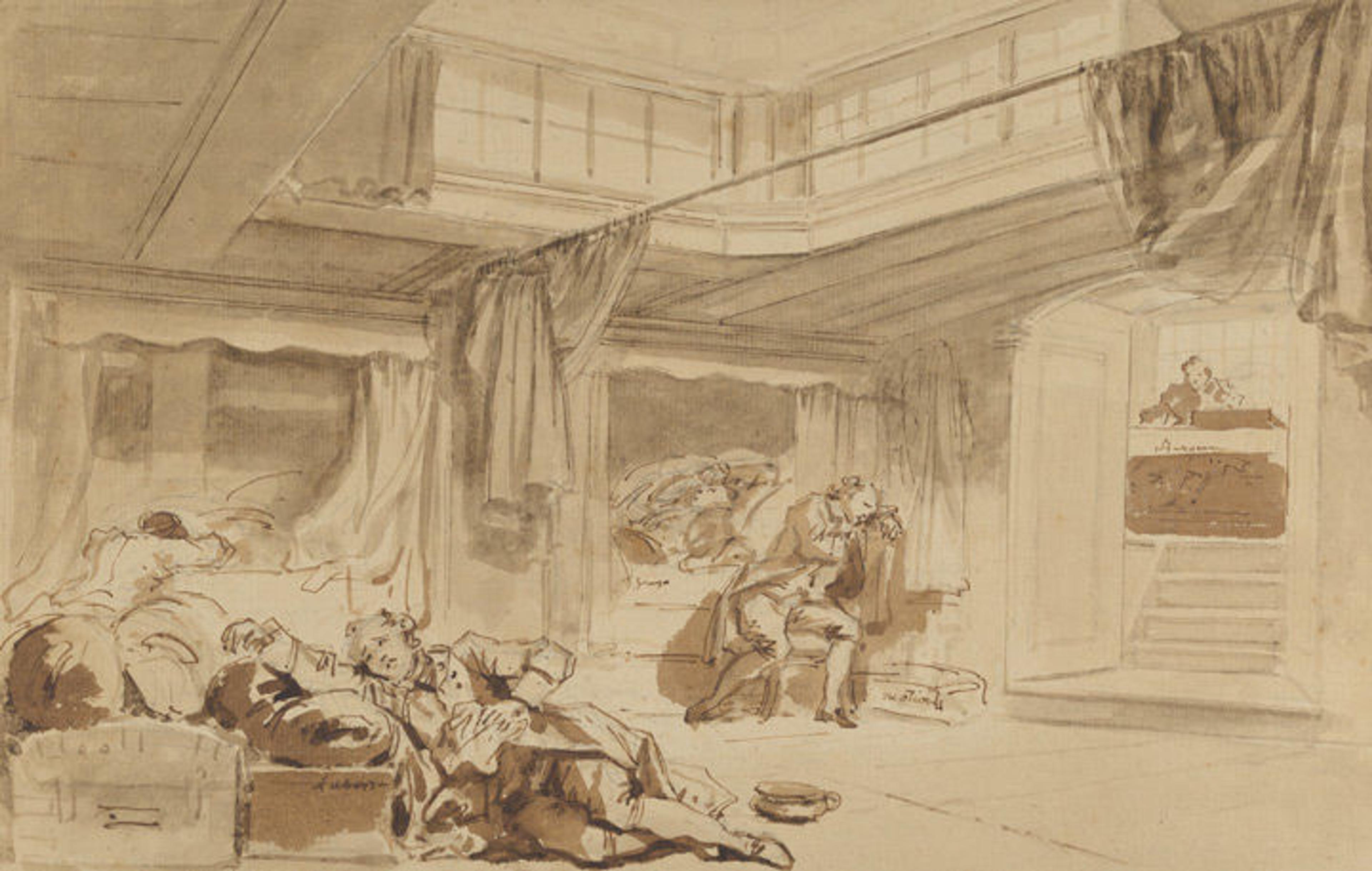
Jean Honoré Fragonard (French, 1732–1806). Fragonard and His Companions aboard a Boat on the Rhine, 1773. Pen and brown ink, brush and brown wash over black chalk underdrawing, 8 1/8 x 12 3/4 in. (20.6 x 32.4 cm). Private collection
«Scholars have long speculated about whether Fragonard made a trip to the low countries. Such a journey would not have been particularly difficult or uncommon at the time. From the works on view in the current exhibition Fragonard: Drawing Triumphant—Works from New York Collections, we can see that he had a deep appreciation of Dutch and Flemish art. Many of his landscapes, especially those done in the period between his two Italian trips (1761–1773), appear to pay homage to 17th-century Dutch painting. But where would he have become acquainted with such works? Northern paintings—quite in vogue in the 18th century—were found in many Parisian collections, and he could easily have seen them without setting foot on foreign soil.»
One clue that a trip to Holland actually took place was uncovered in 2007 by French scholar Sophie Raux, who pointed out an inscription and date (July 1773) on the back of a copy Fragonard drew after Anthony van Dyck, thereby establishing a date for the trip. Additionally, my colleague Marie-Anne Dupuy-Vachey has demonstrated that a never-before-exhibited sheet from a New York private collection, Fragonard and His Companions aboard a Boat on the Rhine, must be a visual record of that journey.
The normal route from Amsterdam to Paris at the time included travel by boat along the Rhine. A newspaper published in Düsseldorf on August 23, 1773, recorded the passage through the city of four Frenchmen: the artist; his patron, Pierre Jacques Onésyme Bergeret de Grancourt (1715–1785); Bergeret's brother-in-law, Etienne Charles Maussion, seigneur de la Courtaujaye; and the abbé Charles François de Lubersac de Livron.
In this humorous sheet, the scene of the four men (and perhaps a servant) aboard a large boat is rendered in the caricature-like style Fragonard often reserved for his most personal subjects. He captures, in his usual quick and incisive penwork, the suffering of a group of travelers overwhelmed with seasickness. Sprawled throughout the sleeping cabin, they seem to writhe and moan. Only the artist's patron, Bergeret de Grancourt, seems immune to nausea; he can be seen through the doorway working industriously at his desk. Fragonard was less fortunate: Identified in his typical shorthand as "frago," he is visible stretched out in the alcove on the right, his eyes closed.

Detail view of the artist in Fragonard and His Companions aboard a Boat on the Rhine
Fragonard's self-deprecating wit allowed him to find humor even in the midst of physical discomfort, as evidenced in the prominently placed chamber pot. Memories of the unpleasant episode must have faded quickly, however, as Fragonard and Bergeret—accompanied by an even larger retinue—set off again, a few weeks after their return to Paris, for a yearlong tour of Italy.
Related Links
Fragonard: Drawing Triumphant—Works from New York Collections, on view at The Met Fifth Avenue through January 8, 2017
Now at The Met: Perrin Stein, "The Dream of Fragonard" (October 17, 2016)